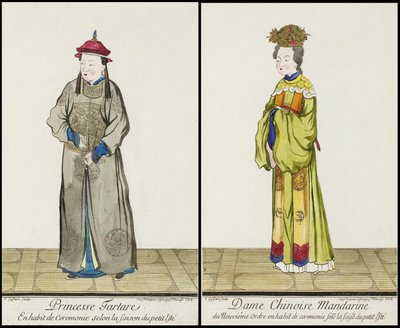
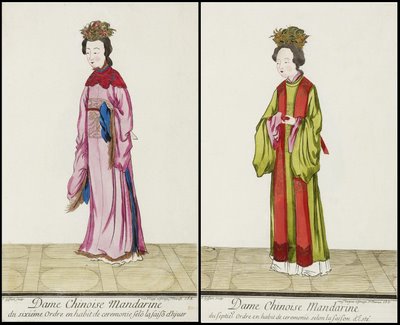
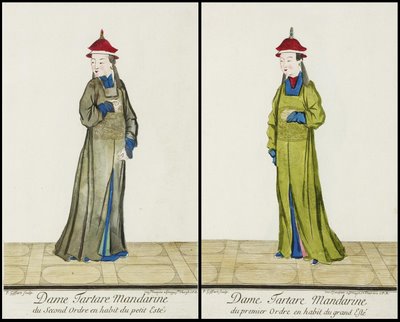
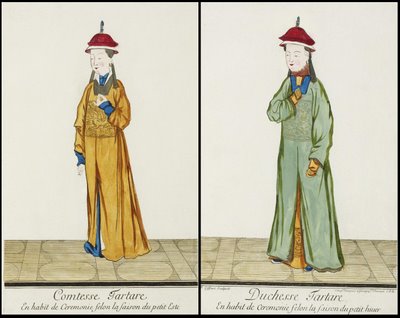
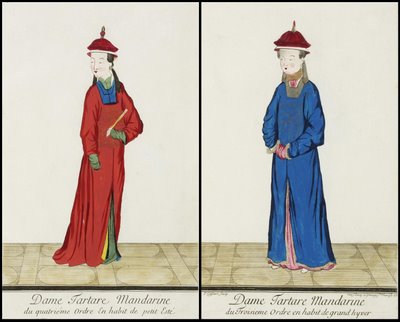

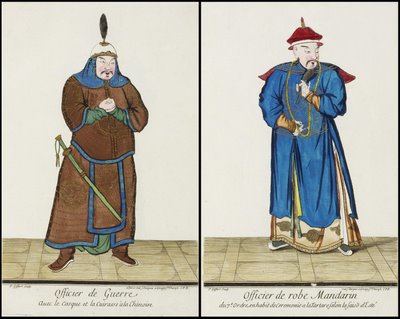
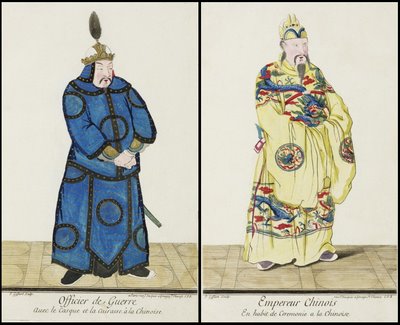
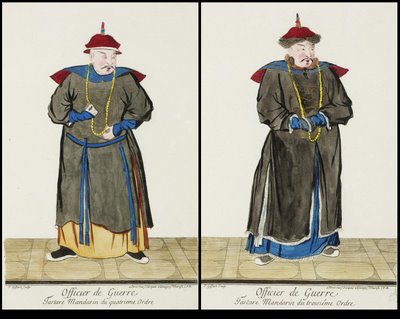
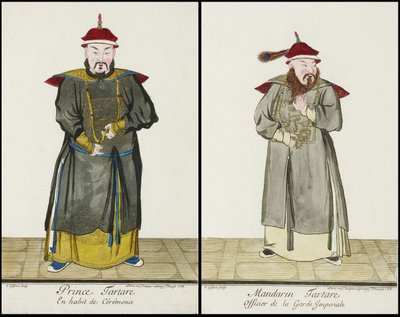
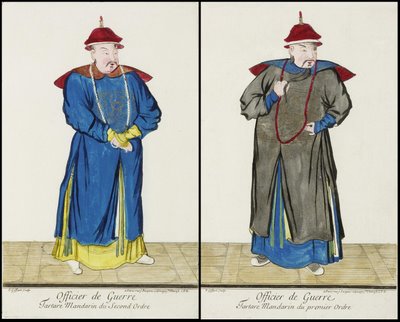
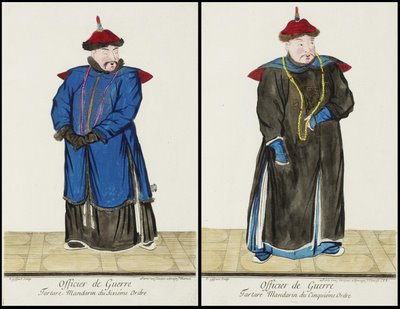
One hundred and three years after the first Jesuit missionary travelled to China, a contingent of scientifically trained Jesuit priests was dispatched by Louis XIV to Peking in 1688. Most famous among them was mathematician Joachim Bouvet (c.1656-c.1732)
Bouvet was well regarded by Emperor Kangxi and he instructed the Court in scientific subjects. Bouvet wrote a number of texts, including a history of Kangxi's reign in which the Emperor was sketched as a benevolent and cosmopolitan ruler - a work that was influential in European understanding of chinese culture.
Bouvet became interested in Court rituals and particularly those that related to the ancient chinese classical text, the I Ching or Book of Changes. In a letter to german mathematician Gottfried Wilhelm von Leibnitz, Bouvet described this divinatory work and Leibnitz found support in it for his theories on calculus and binary systems. So inadvertently, Bouvet was partly responsible (ok, it's a stretch) for helping formulate the language by which computers operate today.
Bouvet is also remembered for his 'figurist' theories, in which works such as the I Ching were said to have been directly related to themes in the bible and kabbalah. Leibnitz was smitten with the chinese work..
"And thus, as far as I understand, I think the substance of the ancient theology of the Chinese is intact and, purged of additional errors, can be harnessed to the great truths of the Christian religion. Fohi, the most ancient prince and philosopher of the Chinese, had understood the origin of things from unity and nothing, i.e. his mysterious figures reveal something of an analogy to Creation, containing the binary arithmetic (and yet hinting at greater things) that I rediscovered after so many thousands of years, where all numbers are written by only two notations, 0 and 1."None of this of course relates to the above hand coloured engravings which come from Bouvet's 1697 book, 'L'Estat Present De La Chine, En Figures'. I think there are about 60 illustrations in the text which is online at Herzogin Anna Amalia Bibliothek.
Unless you have a specific interest or you want higher resolution images (but click the above images for much larger versions anyway) I wouldn't bother with the website - each image is from 1.5-3Mb in size. But as I found out after downloading, cropping, background cleaning and splicing all the examples above, there is a thumbnail page available. Still, it's a pain either way. {If there's any trouble with those links because of session timing it may require searching for 'Bouvet' - click 'Vorschau' for thumbnails}
- Joachim Bouvet at New Advent.
- 'An Audience with the Emperors' by Pamela Crossley in The Royal Academy of Arts Magazine.
- The I Ching explained.
- Bibliography of western works on the I Ching.
- Gottfried Wilhelm von Leibnitz, an essay.
- You wouldn't predict that images of clothing would lead to this: 'The Republic of Codes - Cryptographic Theory and Scientific Networks in the Seventeenth Century' 1999 by Robert Bachelor at Stanford University (long but interesting read - Athanasius Kircher and Leibniz are the major characters)
- Previous related posts (also: China)



















3 comments :
these are beautiful... i love the colors.
Hi p.k.
A humble offering - for your delectation, not so much for BiblioOdyssey - I think too specialised perhaps.
I found some interesting mss - a "miscellaneous collection" from signatues of the Mexican Inquisition to a stupidly small bible. Some candy to amuse,
http://pics.livejournal.com/tedeisenstein/gallery/00009w9y
Thanks.
Elmsley Rose, they are beautiful and I don't particuarly mind if subjects are specialised: I care more about aesthetic presentation I suppose. Hence I don't often include much by way of textual images unless they are embellished in some way.
In that regard, did you see any of the other galleries at that LJ site you linked? Some really beautiful illumination work (particularly the Spanish manuscript) with very high resolution images available. I may return to those! Thanks very much.
Post a Comment
Comments are all moderated so don't waste your time spamming: they will never show up.
If you include ANY links that aren't pertinent to the blog post or discussion they will be deleted and a rash will break out in your underwear.
Also: please play the ball and not the person.
Note: only a member of this blog may post a comment.